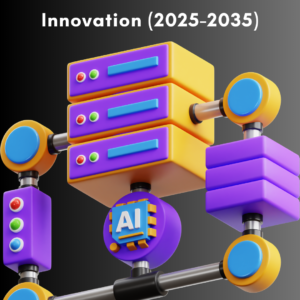1. Executive Summary: FPGA and Programmable Logic Devices Market Overview
- Key Finding: FPGA business expected to grow 15% CAGR, driven by AI, IoT, and 5G markets
- Market Opportunity: $XX billion projected growth by 2035 in programmable logic devices (PLDs)
- Strategic Insight: Why leading companies like Marvell, Broadcom, Renesas, and NXP are entering or expanding in FPGA markets
2. Potential Synergies in FPGA Acquisitions
- Technological Synergies:
- Integration of FPGA with existing semiconductor lines (SoCs, ASICs)
- Complementary intellectual property (IP) and design capabilities
- Expanding use cases in key markets such as 5G infrastructure, automotive, data centers, and AI
- Case Study: How FPGA technology accelerates data center solutions for AI/ML workloads
- Operational Synergies:
- Optimization of manufacturing and supply chain processes
- Sharing R&D resources and enhancing design cycles
- Economies of scale in procurement and production
- Case Study: How Broadcom scaled production of FPGA components by integrating design with existing supply chain
- Sales and Marketing Synergies:
- Cross-selling opportunities to enterprise clients across industries
- Expansion into new market segments by bundling FPGA with traditional product lines
- Enhancing end-to-end solutions for enterprise IT infrastructure and embedded systems
3. Strategic Directions of Leading Companies Through FPGA Acquisition
- Diversification of Product Portfolio:
- Expanding semiconductor portfolio into the growing programmable logic segment
- Capturing new opportunities in edge computing, autonomous vehicles, and IoT applications
- Strategic Implication: Strengthening presence in AI-accelerated processing markets
- Vertical Integration and Customization:
- Leveraging FPGA technology to offer highly customizable solutions to industrial and enterprise customers
- Accelerating time-to-market for tailored chip solutions for AI/ML, 5G, and automotive
- Enhancing Competitive Position:
- Developing more integrated, scalable, and application-specific FPGA systems to compete with Intel’s Altera and Xilinx’s portfolio post-acquisition by AMD
4. Financial and Organizational Integration Capabilities of Acquiring Companies
- Financial Integration:
- Historical performance of financial synergies from prior acquisitions
- Balancing R&D investment with profitability in the FPGA business
- Case Study: Financial outcomes of Renesas’ acquisition of IDT and its integration into the semiconductor ecosystem
- Organizational Integration:
- Track record in cultural alignment post-merger
- Preserving key FPGA talent and innovation culture within larger corporate structure
- Ensuring agility and maintaining FPGA business focus within the broader operational framework
- Best Practices: How NXP successfully integrated prior acquisitions to maintain business focus and innovation
5. Key Factors in Customer Adoption and Competitive Landscape
- Customer Perspective:
- What attracts enterprise customers to FPGA products (flexibility, reprogrammability, scalability)
- Case Study: Why a Tier 1 automotive supplier adopted programmable logic devices for electric vehicle control units
- Competitive Analysis:
- SWOT analysis of major players: Marvell, Broadcom, Renesas, NXP, and AMD/Xilinx
- Competitive responses to industry consolidation and M&A trends in programmable logic
- Opportunities for leadership in niche FPGA markets (e.g., AI, IoT, 5G, autonomous vehicles)
6. Industry Trends Impacting FPGA Acquisitions and Business Models
- Growing Demand for Flexible, Programmable Solutions:
- Convergence of FPGA with AI/ML acceleration driving demand in data centers and high-performance computing
- Adoption of 5G and edge computing requiring more adaptable solutions, favoring FPGA technology
- Specialized and Application-Specific FPGAs:
- Rise of niche FPGAs tailored to automotive, medical devices, and industrial IoT applications
- Impact of neuromorphic computing and advanced algorithms on FPGA architecture
- Geopolitical Factors:
- National security concerns influencing acquisition strategies and foundry capacity management
- Regulatory hurdles in cross-border acquisitions within the semiconductor industry
7. Challenges and Opportunities in Integrating FPGA Businesses
- Balancing Autonomy and Integration:
- Allowing FPGA businesses to maintain innovation while achieving cost and operational efficiencies
- Navigating potential conflicts between FPGA product lines and existing ASIC/SoC businesses
- Leveraging FPGA Expertise Across Product Lines:
- Integration of FPGA capabilities into AI-optimized accelerators and communication hardware
- Case Study: Overcoming challenges in operational integration between acquired programmable logic device businesses and existing semiconductor portfolios
8. Future Outlook for FPGA Market and Technology Advancements
- Projected Growth in FPGA Applications:
- Growth of FPGA in data processing, AI edge, and high-performance computing
- Expansion of FPGA use in automotive control systems, smart cities, and factory automation
- Technological Advancements:
- Evolution of FPGA architectures with AI and machine learning capabilities
- Innovation in 3D programmable devices and mixed-signal systems-on-chip
- Impact of quantum computing and neuromorphic designs on future FPGA evolution
9. Regulatory and Compliance Considerations in FPGA Acquisitions
- Potential Antitrust and Regulatory Challenges:
- Assessing potential risks from regulatory scrutiny in high-consolidation areas like programmable logic
- Export Controls and National Security:
- Navigating export restrictions, particularly in military-grade and defense-related FPGA applications
- Compliance with Global Semiconductor Regulations:
- Ensuring compliance with regional and international semiconductor policies for acquired assets
10. Conclusion and Strategic Recommendations
- Key Takeaways: Synergies, strategic directions, and growth opportunities for FPGA business within leading semiconductor companies
- Recommendations: How companies can maximize the value of FPGA acquisitions through effective integration, technological innovation, and strategic positioning
- Future Outlook: Projected trajectory of the FPGA market and the role of major players in shaping the future of programmable logic devices




